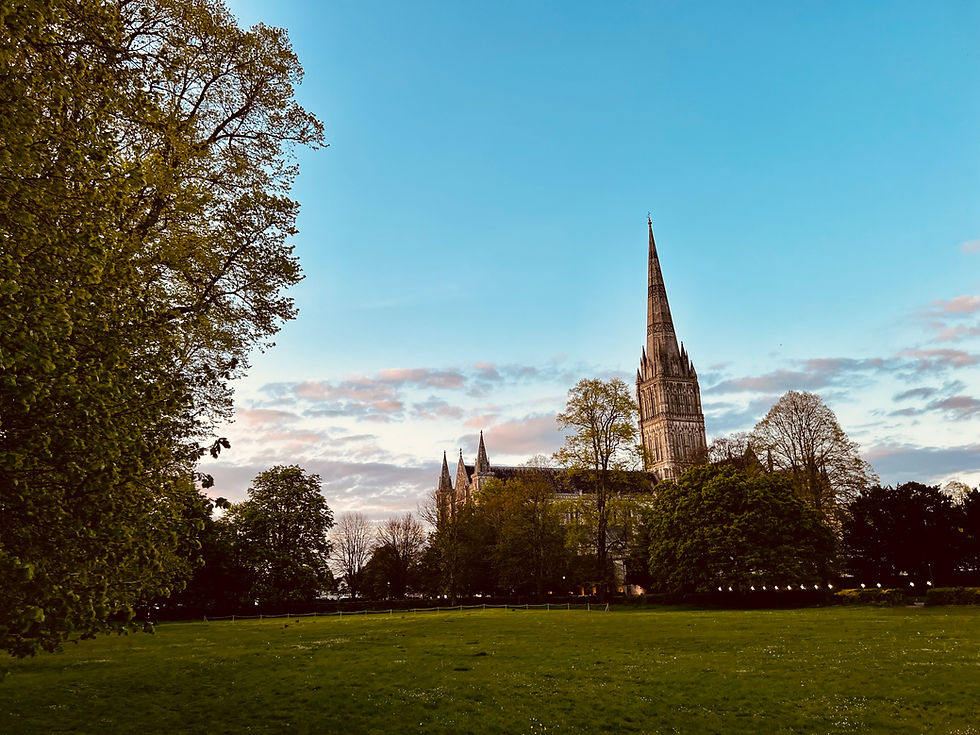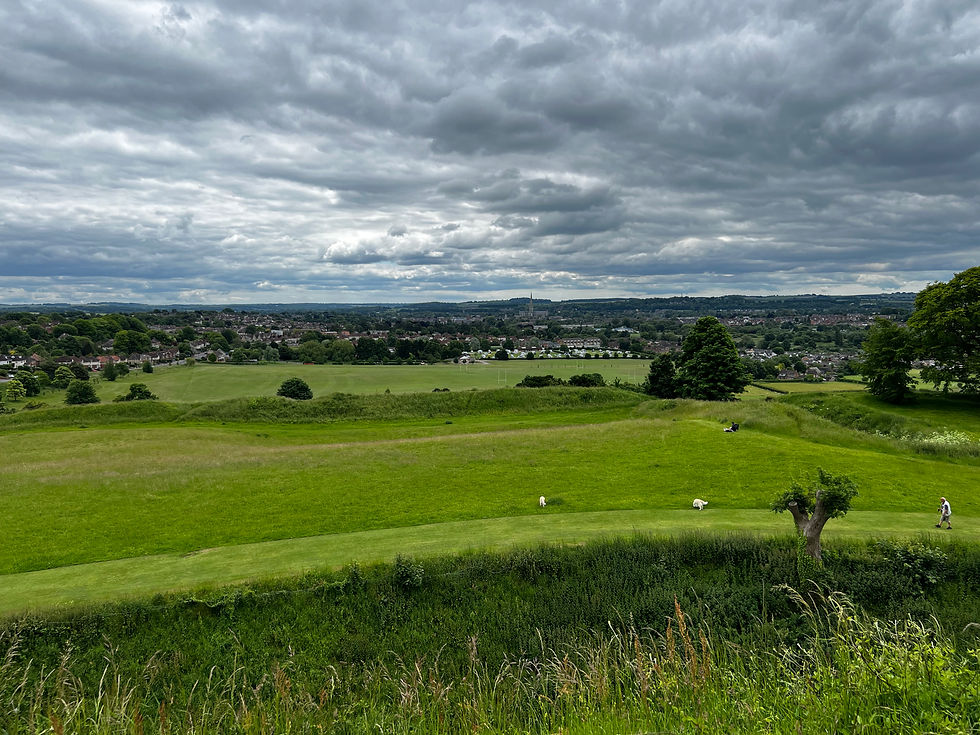The City That Moved
- Heather Newman

- Dec 28, 2024
- 3 min read
Updated: Jan 21
The city of Salisbury, in the south of the county of Wiltshire, is justifiably famous for its magnificent gothic cathedral, with its soaring 123 metre (404 feet) spire, awe-inspiring statuary, ancient mechanical clock, and exceptionally well-preserved original copy of the Magna Carta (dating back to 1215), however the surrounding city also has much to offer anyone who takes the time to visit.

The city of Salisbury that we see today started life in 1220, when the first stone of the present day cathedral was laid down on its current site. The origins, however, go back much further, but on a site at Old Sarum, around a mile and a half away north of the the modern city.
Old Sarum started life as an Iron Age hillfort before being utilised by the Romans and Saxons respectively. The Normans invaded England in 1066, winning their great victory at the Battle of Hastings and then quickly extending and solidifying their rule. They built a castle at Old Sarum - initially a type of shell keep (think wooden Ikea flatpack castle) before building a stone castle and a series of cathedrals on the site. However, by the early 1200s the clergy wanted to move from their existing site and laid out their reasons in a letter to the Pope, the only person qualified to give permission for a new cathedral. The reasons cited included Old Sarum being located on a wet and windy hillside, the lack of easy access to water, a tense relationship with neighbouring soldiers and, probably 'the clincher', the fact that the beautifully white bare chalk they were sitting on was so bright it was straining the eyes of their scribes!
The clergy were given permission to move to a new location. Legend maintains that one of the soldiers shot an arrow from the battlements of Old Sarum, and where it landed would be the site of the new cathedral. An improbable shot, flying around three times further than any known arrow from a longbow, so the legend evolved... but you have to come to Salisbury to learn that part!

Modern Salisbury developed around the cathedral and a market was founded in 1227, which still trades every Tuesday and Saturday. The streets of the new settlement were built in what was called chequers. A chequer is a courtyard surrounded by houses, shops and businesses and, most importantly, a pub! Everyone needed access to clean drinking material and the brewing of beer was really the only safe way to remove the 'nasties' from the water, meaning that everyone drank at least several pints a day. The streets of Salisbury ran around the outside of these little communities and from above it looks like a chequer board (hence the name) - think of Salisbury as a medieval Milton Keynes a thoroughly modern custom-built town for the specific needs of a medieval population!
Explore these medieval streets and discover not only the high street stalwarts but also a great range of independent shops and, of course, in the true 'spirit' of Salisbury, some excellent pubs in which to enjoy a quiet drink.

To learn more about Salisbury and the city's continuing story come and join one of the city tours. Tours currently depart at 11am every Saturday and Sunday from outside the Salisbury Information Centre. Our summer schedule of daily walks start in April.




Comments